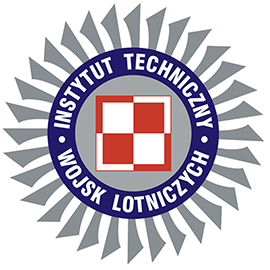About cookies on this site Our websites require some cookies to function properly (required). In addition, other cookies may be used with your consent to analyze site usage, improve the user experience and for advertising. For more information, please review your options. By visiting our website, you agree to our processing of information as described in IBM’sprivacy statement. To provide a smooth navigation, your cookie preferences will be shared across the IBM web domains listed here.
Conquering complexity—a strategic advantage for defense industry leaders
Meeting tight deadlines with the IBM Engineering solution

Unusual troop movements near contested borders. A fleet of unknown watercraft approaching a coastline. A devasting earthquake or storm triggering humanitarian assistance or disaster relief.
Collecting real-time strategic intelligence about these and other fast-moving situations has always been a priority and a challenge for the North Atlantic Treaty Organization (NATO), headquartered in Brussels, Belgium.
However, with the 2021 completion of the Alliance Ground Surveillance (AGS) system, NATO now operates a fleet of five Global Hawk remotely piloted aircraft. These high-flying “eyes in the skies,” based in Sigonella, Italy, can track moving objects on the ground and quickly transmit actionable information to NATO intelligence analysts, military commanders and political leaders.
Deploying AGS required a multinational, multiyear research and development effort and an investment of over EUR 2 billion. But before surveillance aircraft could take flight, the entire AGS system, including each of its air, ground and support segments, had to be modeled, simulated and tested to prove that the system would work under real-world conditions.
Faster delivery cycles
Met the aggressive delivery schedule for the complex NATO AGS BattleLab test bed program in 31 months by deploying and integrating a suite of IBM Engineering solutions
Decrease in defects
Decreased the number of defects in program requirements by 20% through improved management of engineering requirements
Nobody had ever built an engineering test platform for a system like AGS, which had exacting NATO requirements for standardization, security and reporting. Nevertheless, a team of scientists and engineers in Poland, with many years of defense industry experience, saw AGS as a significant opportunity to contribute to NATO’s mission.
“The AGS BattleLab project, a persistent test bed for AGS system development, was our idea,” says Jaroslaw Sulkowski, Chief of C4ISR Systems Integration, Air Force Institute of Technology-Poland (Instytut Techniczny Wojsk Lotniczych). “Our proposal also established brand-new elements in the ground segment, based on the simulation environment.”
“The products and services we create are recognized beyond the borders of our country and the Institute has become the showcase of Polish engineering,” says Krzysztof Wierzbicki, Head of Test and Verification at the Air Force Institute of Technology. “When we submitted our proposal to NATO for an AGS BattleLab test bed, it was accepted and we immediately went to work on this high-profile project—which also came with a tight 31-month deadline.”
As the Institute examined the scope of work required for AGS BattleLab project, it found out that project documentation alone would include hundreds of thousands of pages. In addition, the project would incorporate over 300 test cases as the Institute ran scenarios, verified requirements and validated interoperability between the operational and simulated components.
“The level of complexity involved with AGS BattleLab was something never seen before in our organization,” says Wierzbicki. “We were also facing the huge challenge of standardization with NATO requirements.”
“Implementing such a complex set of standards required a specific set of tools, and there wasn’t time to integrate popular open-source solutions,” says Bartosz Chrabski, Chief Technical Officer at IBM Business Partner SmarterProcess. “That was why we recommended to the Institute that the best solution to solve their challenges was the IBM Engineering portfolio.”
Since NATO already provided data in the IBM® DOORS® format, it was much easier for the Institute to migrate from its existing DOORS platform to IBM DOORS Next and the IBM Engineering Requirements Management DOORS Family of software tools. IBM DOORS Next became the foundation of the project. Other IBM tools integrated into the portfolio, as recommended by SmarterProcess, included the IBM Engineering Lifecycle Management, IBM Engineering Test Management and IBM Workflow Management offerings.
“These tools addressed the most important concepts required by DO-178 and DO-178 B and C, which are guidelines and objectives related to developing and certifying aviation software,” says Chrabski. “There were key quality management benefits right out of the box, because the IBM tools supported testing of the output and integrations.” The IBM platform also stored information about verification and results, as well as support for configuration management and change request processes for all the artifacts.
Because the Institute is an entity of the Polish government, the AGS BattleLab project had to comply with government as well as NATO requirements. “Government requirements cover statement of work, methodology, security and reporting,” says Sulkowski. “By being able to manage and co-locate everything in the IBM DOORS platform, the Institute was able to follow the government’s rules and keep the AGS BattleLab project on track.”
Within the 31-month completion schedule allotted for AGS BattleLab, the Institute successfully completed all four phases of the project, including the final phase: an end-to-end test performance of AGS at the main operation base in Italy.
“In the project handover to the AGS forces, NATO indicated that they were very satisfied,” says Wierzbicki. “Implementing an engineering project with a complexity level similar to AGS BattleLab would not be possible without IBM Engineering tools and an experienced business partner like SmarterProcess.”
The direct linkage between NATO requirements and the AGS BattleLab database proved to be a key advantage in completing the project on schedule. “Reporting is vital for NATO and we had to report all changes. The tools gave me the opportunity to automate data collection and status reporting,” says Wierzbicki. “It became quite easy to generate the various number of reports on demand and it saved a lot of time.”
Meeting the 31-month project deadline was an even more impressive accomplishment considering that the first year of the project was consumed by the procurement process. “I took the decision to start the design process immediately, based on our confidence with the IBM Engineering requirements management tools,” says Sulkowski. “Pioneering design work was finished one month before the critical design review, which confirmed our concept and helped keep us on schedule.”
Recently, the Institute worked with NATO to provide familiarization training for the AGS system and is developing new opportunities to work with NATO and other multinational defense contractors. “Through our experience with AGS BattleLab, the Institute has improved the efficiency of our work,” says Sulkowski. “Based on this experience and the databases we developed with IBM DOORS and other tools, we can more easily calculate project requirements and propose excellent solutions for future users and subcontractors that cooperate with us.”
“Companies in the defense sector need to work together. They want to exchange information and be compliant in their collaboration,” says Chrabski. “Because IBM DOORS is becoming a standard in this sector, using this tool is becoming a big advantage, especially where security is so important and companies will not want to exchange this kind of information in the cloud.”
“This is a marvelous, very powerful tool that enables us to work with those responsible for project requirements and those responsible for acceptance criteria, without any ambiguity,” says Sulkowski. “This solution has become standard for project management at our Institute.”

About the Air Force Institute of Technology-Poland (Instytut Techniczny Wojsk Lotniczych)
Established in 1953 and based in Warsaw, the Air Force Institute of Technology (link resides outside of ibm.com) is a research institute supervised by the Polish Minister of National Defense. The Institute operates research and development divisions for aircraft system design and integration, unmanned aerial vehicles, aerial armament, aircraft engines, avionics, logistics, reliability and safety, C4ISR systems integration, airfield infrastructure and substitutes for fuels, oils and lubricants.
Based in Europe, IBM Business Partner SmarterProcess (link resides outside of ibm.com) provides consulting services for large clients in the public, automotive and industrial sectors using DevOps and Agile methodologies. The firm also provides services for requirements engineering evaluation and analysis, software distribution, project deployment, training, and maintaining testing and production environments for cloud computing.
Legal
© Copyright IBM Corporation 2022. IBM Corporation, New Orchard Road, Armonk, NY 10504
Produced in the United States of America, January 2022.
IBM, the IBM logo, ibm.com, and DOORS are trademarks of International Business Machines Corp., registered in many jurisdictions worldwide. Other product and service names might be trademarks of IBM or other companies. A current list of IBM trademarks is available on the web at “Copyright and trademark information” at ibm.com/legal/copyright-trademark.
This document is current as of the initial date of publication and may be changed by IBM at any time. Not all offerings are available in every country in which IBM operates.
The performance data and client examples cited are presented for illustrative purposes only. Actual performance results may vary depending on specific configurations and operating conditions. THE INFORMATION IN THIS DOCUMENT IS PROVIDED “AS IS” WITHOUT ANY WARRANTY, EXPRESS OR IMPLIED, INCLUDING WITHOUT ANY WARRANTIES OF MERCHANTABILITY, FITNESS FOR A PARTICULAR PURPOSE AND ANY WARRANTY OR CONDITION OF NON-INFRINGEMENT. IBM products are warranted according to the terms and conditions of the agreements under which they are provided.
The client is responsible for ensuring compliance with laws and regulations applicable to it. IBM does not provide legal advice or represent or warrant that its services or products will ensure that the client is in compliance with any law or regulation.
Statement of Good Security Practices: IT system security involves protecting systems and information through prevention, detection and response to improper access from within and outside your enterprise. Improper access can result in information being altered, destroyed, misappropriated or misused or can result in damage to or misuse of your systems, including for use in attacks on others. No IT system or product should be considered completely secure and no single product, service or security measure can be completely effective in preventing improper use or access. IBM systems, products and services are designed to be part of a lawful, comprehensive security approach, which will necessarily involve additional operational procedures, and may require other systems, products or services to be most effective. IBM DOES NOT WARRANT THAT ANY SYSTEMS, PRODUCTS OR SERVICES ARE IMMUNE FROM, OR WILL MAKE YOUR ENTERPRISE IMMUNE FROM, THE MALICIOUS OR ILLEGAL CONDUCT OF ANY PARTY.
